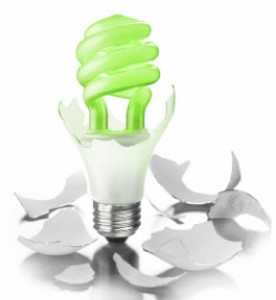The standard incandescent bulb — what we typically think of as a “basic light bulb” — is a pretty inefficient piece of technology, wasting 90 to 98% of its electrical use as heat rather than useful light. Much better are fluorescents, including the now-ubiquitous compact fluorescent lights (CFLs), which are roughly 75% more efficient for the same light output.
By now, many people are aware of this fact, but few have taken a moment to actually calculate how much money they could save if they switched out their high-use bulbs to CFLs, as the commercials instruct us. In his book Wind Power for Dummies, Ian Woofenden calculates that a family using a 75-watt incandescent for six hours per day would spend about $54 a year on energy (at 32 cents per kWh, which admittedly is higher than most current prices, although experts expect utility rates to climb in the near future), including the costs of replacement bulbs at 75 cents each. If they replaced that instead with a 20-watt CFL, to produce the same amount of light, it would cost $14 a year to power. That fluorescent probably cost $6 but should last them four years at a use of six hours a day (without rapid switching), leading to a total expenditure of $15.50 per year over that time — $38.50 less per year than using incandescents. That’s a simple return on investment (ROI) of 642% per year.
